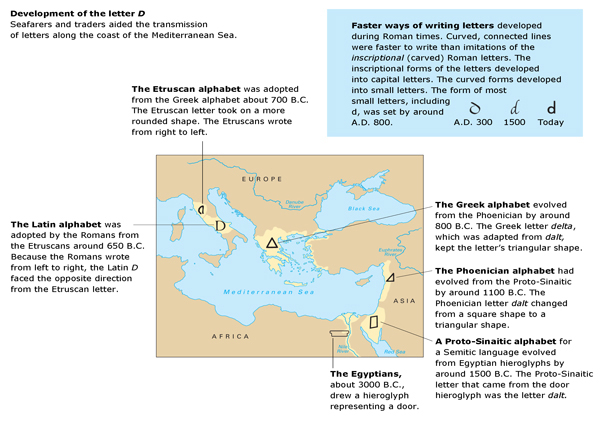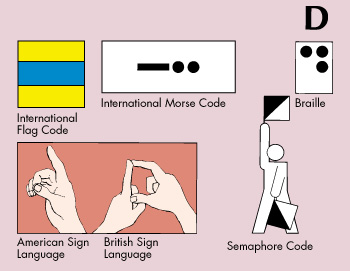D is the fourth letter of the alphabet used for the modern English language. It is also used in a number of other languages, including French, German, and Spanish.

The sound represented by the letter D occurs in such words as dog, under, good, and middle. The combination DG represents the J sound, as in edge. See Pronunciation.
Scholars believe the letter D evolved from an Egyptian hieroglyph (pictorial symbol) that represented a door. Hieroglyphs were adapted to be used for a Semitic language by around 1500 B.C. The alphabet for this Semitic language—the earliest known alphabet—is called Proto-Sinaitic. By 1100 B.C., an alphabet for another Semitic language, Phoenician, had evolved from Proto-Sinaitic. See Semitic languages.
The Phoenician letter that can be traced to the Egyptian door hieroglyph is the fourth letter of the Phoenician alphabet, dalt. The Phoenicians used the letter to represent the beginning D sound of dalt, their word for door. About 800 B.C., when the Greeks adapted the Phoenician alphabet, they adapted dalt to delta.
When the Etruscans borrowed the alphabet from the ancient Greeks around 700 B.C., however, they did not have a D sound. Nevertheless, the Etruscans kept the letters they did not need—including delta. When the Romans adopted the alphabet from the Etruscans by about 650 B.C., they began to reuse the letter for the D sound.

See also Alphabet.
